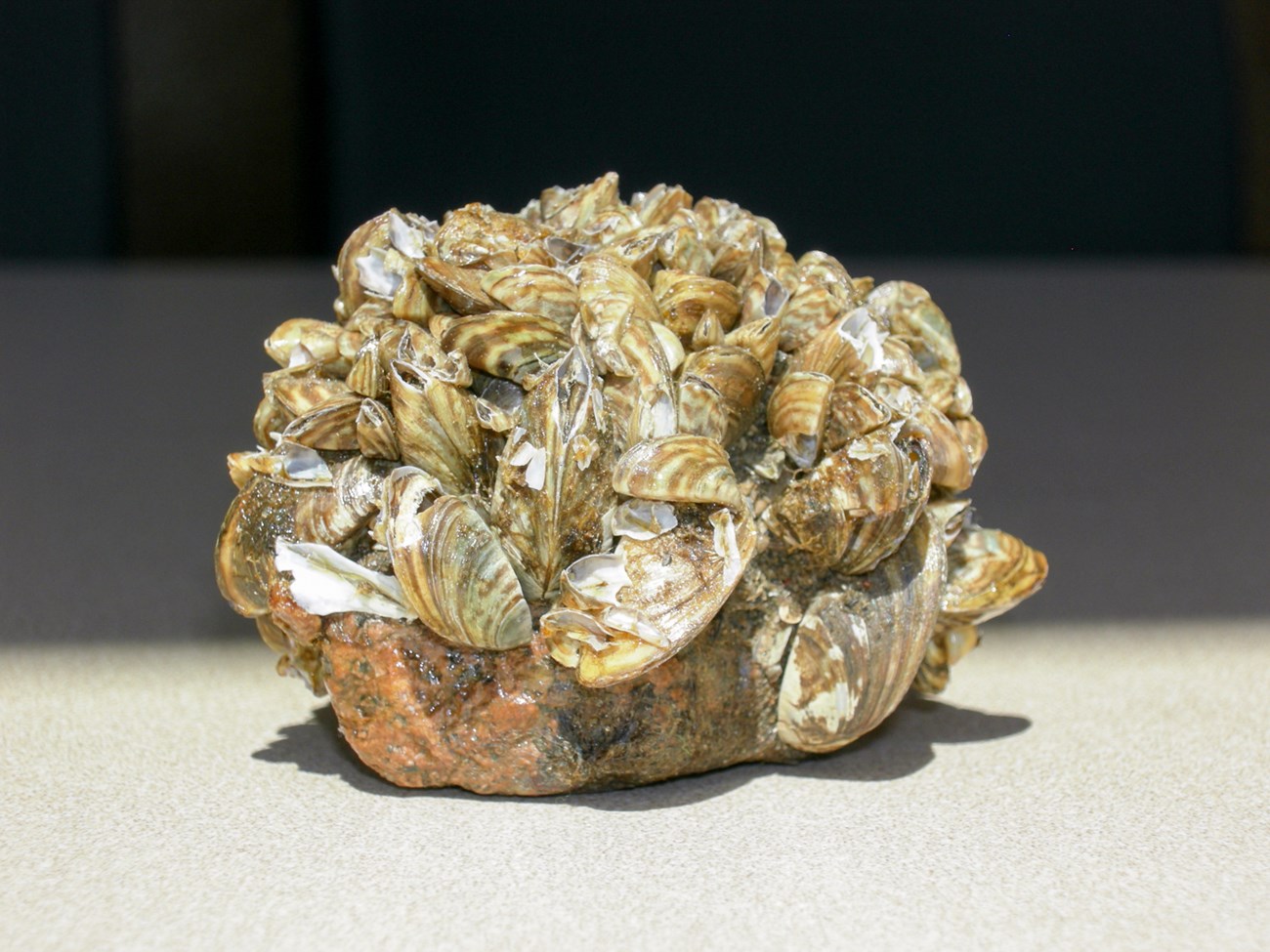Prevention is the best way to keep a water body clean of zebra mussels. Sophie Koch
Article
Invasive Zebra Mussels

NPS / Schaeppi
Zebra mussels (Dreissena polymorpha) are small, freshwater, bivalve shellfish that were likely brought to the U.S. as stowaways in the ballast water of ships. They are native to the Caspian and Black Seas south of Russia and Ukraine, and have since become widespread in both Europe and the U.S.
They are easy to identify, with a distinct, flat-bottomed ‘D’ shape to their shells that allows them to sit flat against a solid surface, and black, zigzag stripes against a cream background that earned them their name. They grow around two inches long at most, and are microscopic in their larval stage, which is known as a “veliger.” They are short-lived (between two and five years), and begin reproducing at two years of age. Each female can release up to a million eggs per year.
Economic impacts
“Biofouling,” or the accumulation of adult zebra mussels on surfaces put in the water, is one of the more notable impacts zebra mussels can have on a local economy. Zebra mussels are armed with rootlike threads of protein, called “byssal threads,” that allow them to firmly attach themselves to hard surfaces such as rocks, native mussels, docks or boats.
Typically, this isn’t a problem for boats that are only in the water for short trips, but boats, docks or intake pipes that are left in the water for a long period of time can become encrusted and be very difficult to clean. If a boat owner also fails to drain the water from his or her motor, any veligers floating in the water will root themselves and clog the machinery as they reach adulthood.
Environmental impacts
Biofouling is a problem in the ecological world as well. Zebra mussels will attach to native mussels much like they do docks, and in large enough numbers can prevent the natives from moving, feeding, reproducing, or regulating water properly. The zebra mussels also outcompete the natives for food and space, and because of their fast reproduction can quickly overwhelm a water system.
The feeding habits of zebra mussels can also have a drastic impact on an infested lake. Zebra mussels are filter feeders that siphon particles of plankton from the water. They are highly efficient at this, and a large population of mussels can quickly clear the water of almost all floating particles. This change can cause shifts in local food webs, both by robbing food from native species that feed on plankton and also by increasing water clarity and thus making it easier for visual predators to hunt.
Where are they now?
Zebra mussels were first discovered in the U.S. in the late 1980s. The first established population was discovered in 1988 at Lake St. Clair, which straddles the border between the U.S. and Canada and which connects to Lake Erie and Lake Huron. They quickly spread across the Great Lakes, and are now present in the Mississippi and St. Croix Rivers as far north as Stillwater. Human transport has now spread them to the west coast of the U.S.
How do we stop them?
Once a population of zebra mussels has become established in a water body, there is very little to be done to remove them.
Prevention, therefore, is the best way to keep a water body clean of zebra mussels. Because they reproduce by spewing veligers into the water, zebra mussels are dependent on a current to spread their populations. This means that they can only move downstream in a river, and need a ride if they are to move further upstream.
Humans often aid them in their spread by transporting water from place to place. The microscopic veligers are invisible to the naked eye, and infected water transported in the bottom of a boat, inside a motor or via a livewell can readily become a new infestation if released into an otherwise clean river or lake. To prevent this, boaters must take care to drain their boats, motors and livewells before leaving a lake or river, wash their boat and trailer thoroughly, and allow it to dry for at least five days (the amount of time a zebra mussel can survive out of water) before taking the boat out again.
Since 1992, the National Park Service at the St. Croix National Scenic Riverway has led the efforts designed to halt or slow the spread of zebra mussels. Public education and information, access management, monitoring, and research are all tools in this effort. These tenations animals have colonized the St. Croix River from the Mississippi upstream to the city of Stillwater. Threats from colonies in lakes near the Namekagon River are worrisome. Boats must take precautions to prevent further infestation.
Last updated: April 2, 2021
